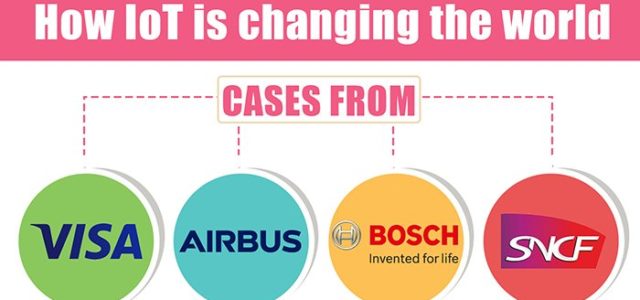The Business Roundtable, an influential group of almost 200 CEOs of America’s largest companies, recently issued a statement that discarded the old notion that the sole purpose of a business is to provide value to shareholders.
Instead, it advocated serving a diverse group of stakeholders including customers, employees, suppliers and communities.
The idea is not a new one. In fact, Jack Welch once called shareholder value the dumbest idea in the world. Nevertheless, The Wall Street Journal opinion page immediately pounced, suggesting that the move was just an attempt to “appease the socialists” and that it would undermine financial accountability.
It’s hard to see how acknowledging accountability to stakeholders other than investors would undermine accountability to investors. Shareholders, after all, have the power to fire CEOs.
Even more importantly though, the notion that performance can be reduced down to a single metric is foolhardy and dangerous. Managing a business is simply tougher than that.
The Principal-Agent problem
Every business seeks to make a profit. Ones that do not achieve that basic requirement do not stay in business for long. However, that doesn’t mean that the only reason a business exists is to make money.
Clearly, in order to earn a profit over the long term, you need to provide value for others. Anybody who has ever run a business knows this.
Yet a large corporation is very different from an ordinary business in that there is what’s known as a principal-agent problem. The shareholders are a dispersed group that have relatively little information, while the managers of the business are a small group with an asymmetric informational advantage.
So you can see how the concept of shareholder value can be attractive. If you can reduce performance down to a single metric, such as stock performance, then the principal-agent problem is solved. Shareholders, as principal owners of the company, can hold managers, as their agents, accountable.
Yet this is a fantasy. There are many things that a manager can do, such as reducing investment or making a lot of sexy acquisitions, that can increase short-term financial performance, but hurt performance in the long run. So the concept of shareholder value has always been a murky one.
From value chains to ecosystems
For decades, the dominant view of strategy was based on Michael Porter’s ideas about competitive advantage. In essence, he argued that the key to long-term success was to dominate the value chain by maximizing bargaining power among suppliers, customers, new market entrants and substitute goods.
Yet there was a fatal flaw in the notion that wasn’t always obvious. In an industrial economy, where technology is relatively static, value chains are stable.
However, in a fast-moving information economy, firms increasingly depend on ecosystems to compete. That drastically changes the game.
Ecosystems are nonlinear and complex. Power emanates from the centre instead of at the top of a value chain. You move to the centre by connecting out.
So while an industry giant may possess significant bargaining power, exercising that bargaining power can be problematic, because it can weaken links to other nodes in the ecosystem.
So the increased emphasis on stakeholders is not merely some newfound socialistic altruism, but a realistic strategic shift. In a networked-driven world, you need to continually widen and deepen links to other stakeholders within the ecosystem.
That’s how you gain access to resources like talent, technology and information.
Building power through gaining trust
In a famous 1937 paper, Nobel Prize-winning economist Ronald Coase argued that the function of a firm was to minimize transaction costs, especially information costs.
For example, it makes sense to keep employees on staff, even if you might not need them today so that you don’t need to search for people tomorrow when a job comes in.
Another way to minimize transaction costs is through building trustful relationships. If the stakeholders within ecosystems that you operate trust you, you gain greater access to information and decrease the amount of resources you need to spend on enforcing formal and informal norms.
In fact, a study from Accenture Strategy recently found that building trust with stakeholders is increasingly becoming a competitive advantage.
In The Good Jobs Strategy MIT’s Zeynep Ton found that investing more in well-trained employees can actually lower costs and drive sales in the low-cost retail industry.
While the sector is often thought of as highly transactional, her research indicates that a dedicated and skilled workforce results in less turnover, better customer service and greater efficiency.
For example, when the recession hit in 2008, Mercadona, Spain’s leading discount retailer, needed to cut costs. But rather than cutting wages or reducing staff, it asked its employees to contribute ideas. The result was that it managed to reduce prices by 10% and increased its market share from 15% in 2008 to 20% in 2012.
In other cases, competitors collaborate to improve their industrial ecosystems for customers. So it is should not be surprising that firms are increasingly investing in structures that are focused on ecosystems, such as Internet of Things Consortium, Partnership on AI and the Manufacturing Institutes. Again, power in an ecosystem resides at the centre, not at the top, so to compete you have to connect.
Clearly, it could be argued that by investing in these partnerships, business are increasing shareholder value.
However, to do so would be to essentially argue that investing in stakeholder ecosystems and pursuing shareholder value are equivalent, which reduces the debate to one of semantics rather than substance.
Manage for mission, not for metrics
Perhaps one of the most interesting lines in the Business Roundtable statement was the assertion that “each of our individual companies serves its own corporate purpose,” because it acknowledges that the notion of purpose can’t be reduced to a single concept or metric.
Historically, the lines between industries were fairly clear-cut. Ford competed with GM and Chrysler. Later, foreign competition became more important, but the basic logic of the industry remained fairly stable: you produced cars and sold them to the public through a network of dealers.
Today, however, industry lines have blurred considerably. A company like Amazon competes with Walmart in retail, Microsoft, IBM and Google in cloud computing, and Netflix and Warner Media in entertainment.
The company itself is much more than simply a bundle of operations competing in different value chains, but a platform for accessing a variety of ecosystems of talent, technology and information.
In much the same way, automobile manufacturers are making investments to transform themselves into mobility companies.
To do so, they are building ecosystems made up of technology giants, startups and others. They are not seeking to “maximize bargaining power,” but rather to prepare for a future that hasn’t taken shape yet.
That’s why today, business leaders need to manage for mission, not for metrics. Building trustful relationships among a diverse set of stakeholders may not be as simple or as clear cut as “maximizing shareholder value,” but it’s increasing what profit-seeking businesses need to do to compete.
Article by channel:
Everything you need to know about Digital Transformation
The best articles, news and events direct to your inbox







